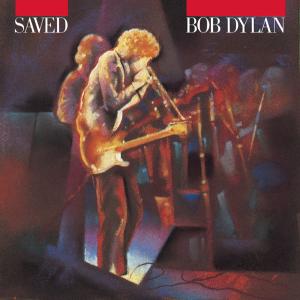
Saved (1980)

1. A Satisfied Mind
2. Saved
3. Covenant Woman
4. What Can I Do For You?
5. Solid Rock
6. Pressing On
7. In the Garden
8. Saving Grace
9. Are You Ready?
With Saved Bob Dylan stepped not only deeper into his faith but into the full-bodied traditions of gospel music—sonically, thematically, and spiritually. Where Slow Train Coming had flirted with the structure of Southern gospel while maintaining the lyrical cadence of Dylan's earlier introspective work, Saved discarded subtlety altogether. It is not merely a Christian album; it is a gospel revival committed to tape.
From the outset, this record makes no concessions to the secular listener. The arrangements are unabashedly exuberant: handclaps, Hammond organs, choral refrains, and rhythmic stomps—elements lifted wholesale from the Sunday service circuit. The opening title track explodes with Pentecostal energy, and for a moment it feels as though Dylan has not simply adopted gospel, but allowed himself to be wholly subsumed by it.
But therein lies the paradox. The musical form is authentic, even faithful, yet the performance feels—ironically—less personal than his earlier, more restrained religious recordings. On Saved, Dylan is at his most vocally impassioned, yet somehow emotionally distant. The songs lack the poetic ambiguity that made his earlier work universal. Instead, they trade that in for fervor and repetition—lines heavy with evangelical vocabulary and short on lyrical inventiveness.
Vocally, Dylan’s nasal rasp—a defining asset when draped over folk and rock—clashes more than it complements. On tracks like Solid Rock and Are You Ready, he often sounds more like an impassioned impersonator of a Deep South preacher than a conduit for transcendent revelation. That he is earnest is never in doubt; that he is effective, however, is more contested.
Perhaps the most lasting criticism of Saved is that it marked a departure not only in theme, but in craft. The elliptical poetry of Blonde on Blonde or Blood on the Tracks gave way to lyrical literalism. Gospel, of course, is not known for its subtlety, but one expected Dylan—long the master of metaphor and symbol—to elevate the form rather than wholly submit to it. Even the most devoted fans found little to hold onto in repeated references to “the cross,” “redemption,” and “the blood of the lamb,” devoid of the layered introspection that defined his earlier masterpieces.
Live, Dylan doubled down. The tour supporting Saved featured little from his back catalogue, focusing instead on his newfound testimony. It was, as ever, a characteristically Dylan move: unpredictable, uncompromising, and controversial.
Looking back, Saved stands less as a failure than as a curiosity—an honest, if somewhat overzealous, attempt to fuse personal belief with inherited musical tradition. While it lacks the compositional strength of its predecessor, and falls short of the inventiveness of his secular work, Saved is still an essential chapter in Dylan’s evolution. In a career defined by artistic transformation, this remains one of the most radical.
Go back to the main page
Go To Next Review